Meet Your Avian Neighbors: Swallows, The Most Fabled Fliers Of Brooklyn
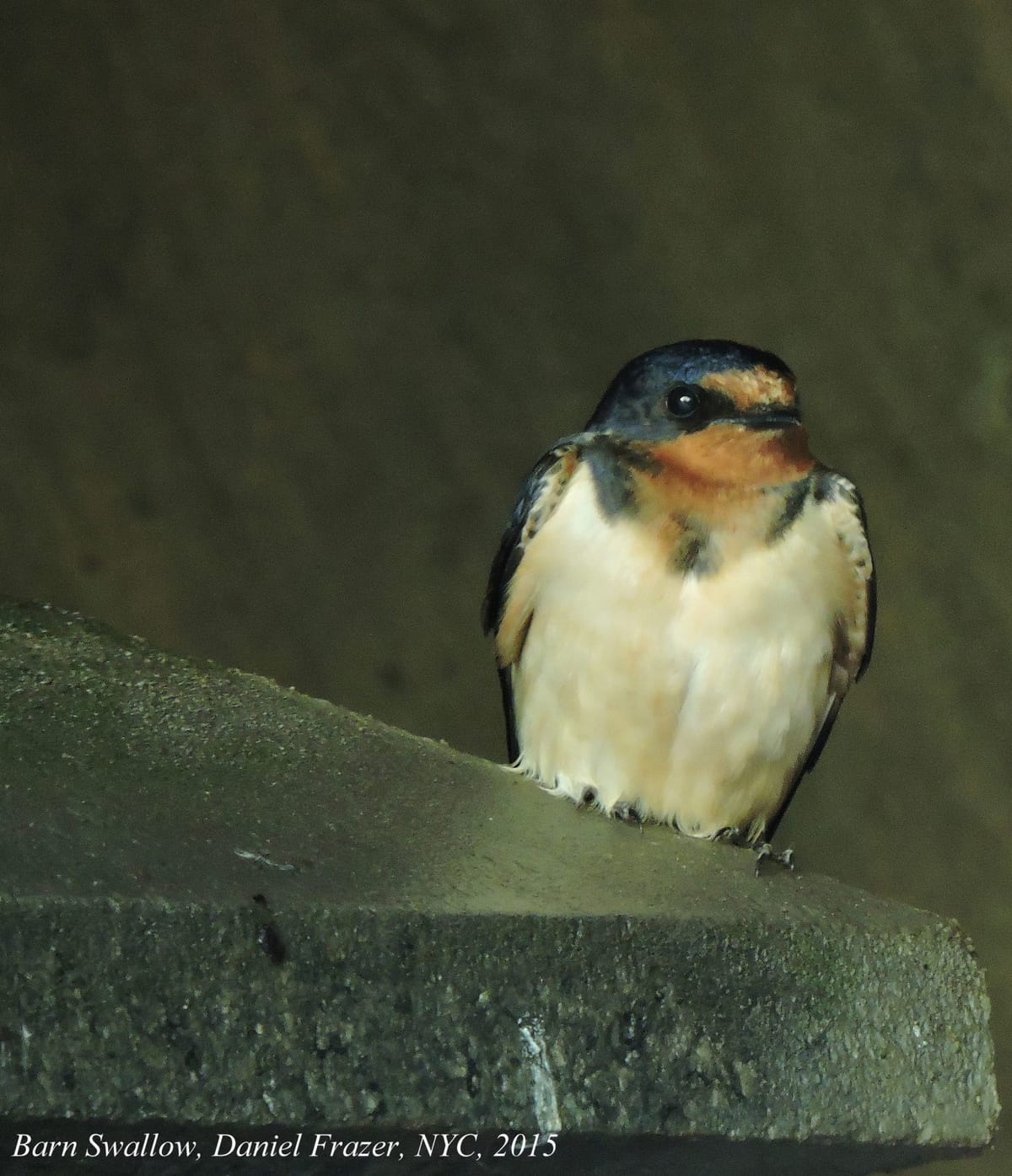
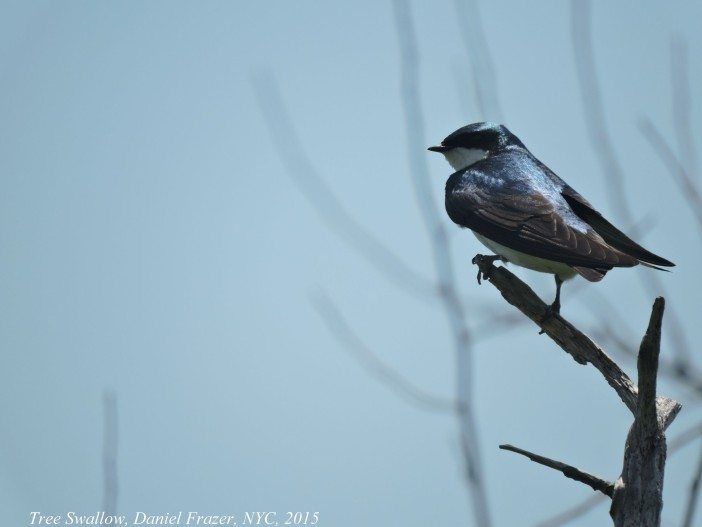
Few birds have evoked as much wonder and respect from cultures around the world as swallows have. In medieval Europe, legend had it that swallows were harbingers of feast — or famine, if they’re not treated well. Native American legend said that the barn swallow brought fire to earth and that an angry god singed his tail, leaving him and all barn swallows with their signature forked tails.
“When swallows grace the morning sky
Of summer’s deepest blue,
As through the air they deftly fly
I’ll always think of you…”
— When Swallows Grace The Morning Sky, A. Blakemore
These small, storied birds fill our skies for about half of the year, being some of the first migrant birds to show us that warmer days are coming. Brooklyn is home to several swallow species, but most common are the handsome tree and barn swallows, which are likely right above your head!
Which species live in Brooklyn?
In NYC, the tree swallow and barn swallow are overwhelmingly most common. However, we also have the occasional northern rough winged swallow, bank swallow, and cave swallow. While quite uncommon in Brooklyn, we do occasionally see purple martins, which are a large strikingly purple swallow. Staten Island is the most reliable place to see these beauties.
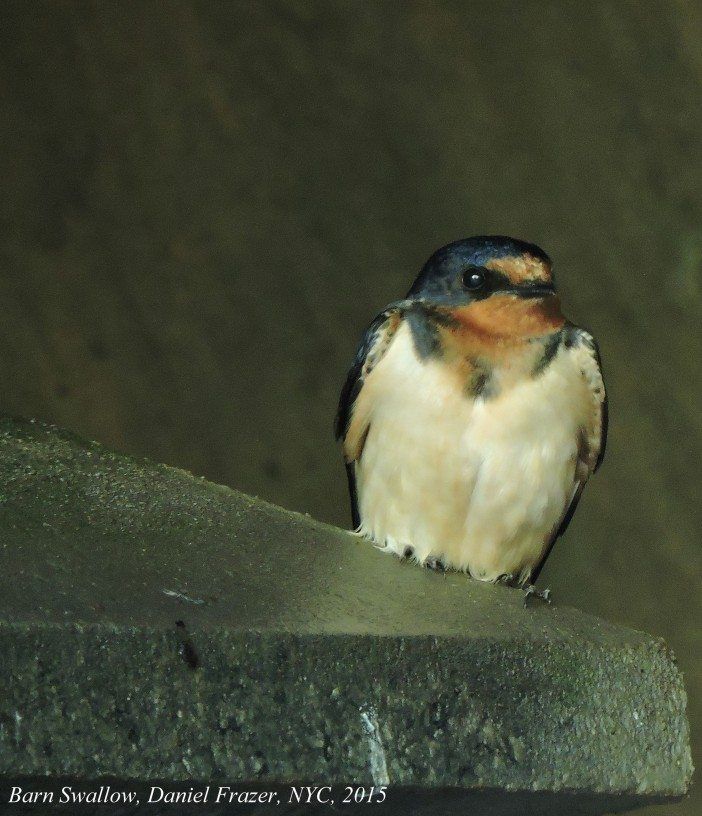
Who am I looking at?
Most of the time, you’re seeing or hearing tree swallows, barn swallows, and chimney swifts (we’ll get to them soon). Look for the clean white underparts of a tree swallow with a very dark, bluish-black back. The tree swallow has a triangular tail that when seen from the ground, appears to be quite dark.
Barn swallows, while more common near bodies of water, are often passing overhead anywhere in Brooklyn. These striking birds are slightly larger than tree swallows and will usually fly a bit lower. Look for their orange hued belly with their characteristic, sweeping swallow tail. Like the tree swallow, their back is a rich purplish/blue black. Barn swallows frequently nest under the many stone bridges of Prospect Park, see if you can find any there!
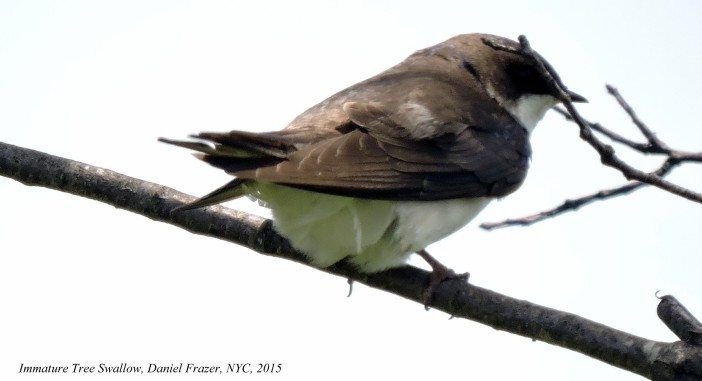
When should I look for them?
Swallows are very active for most of the day, however, on rainy days when the sky clears up towards the evening, get ready for quite the display. Swallows and swifts are insect eaters, flying after bugs so tiny that we can’t see them. After a storm, gnats and other small insects are thick in the air and the birds are eager to thin out their numbers.
So what is a chimney swift?
Chimney swifts superficially look like swallows, but quite interestingly, they’re closest related to hummingbirds. These “cigars with wings” (as birders call them, to quickly differentiate them from swallows) will often be mixed in with the swallows, fluttering moth like, high in the sky. Chimney swifts get their name from their fondness for roosting along the inner walls of chimneys. As mentioned, look for their cigar shaped body with thin sickle shaped wings, fluttering higher in the sky than the swallows.
Where are they coming from?
Barn swallows and tree swallows know no passport and fly to NYC from Central and South America, with some permanent residents in the most southern reaches of the U.S. These amazing birds, weighing no more than about 0.7 ounces, make their journey north to breed and carry on their species.
Prospect Park and other neighboring areas in Brooklyn are fairly common sites for breeding swallows. Often in mid- to late-May, one could observe barn swallows collecting mud to build their cupshaped mud nests. Tree swallows typically breed in cavities and quite readily take to nest boxes put out for them. Jamaica Bay Wildlife Refuge is the best place in NYC to see nesting tree swallows.
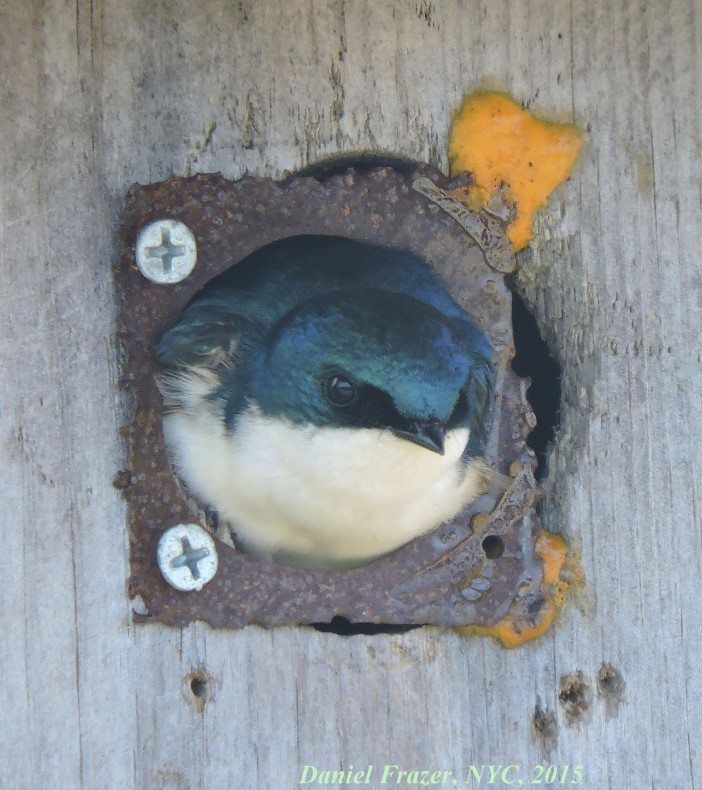
Every few years, a census is done on swallow species (along with about every other bird species in NYC) to determine population numbers, stability, and health. Some birders have noted what appears to be a possible increase in swallow populations, though nothing is certain yet. One possibility, if this is the case, could be the greater number of dead trees around NYC due to Hurricane Sandy, as well, perhaps, as an improving environment in the city.
Birders usually mark an “X” when counting swallows, as they’re often just a bit too fast and high up to get an accurate count. However, there’s always the fun challenge to see how many you can count in one day and how many tree swallows opposed to barn swallows you’re seeing. The next time you’re taking a walk, stop for a minute and look for these elegant, easily missed birds, elegantly spilling across the sky.
Daniel Frazer is an amateur naturalist and birder born and raised in Southern Brooklyn. Daniel spends an inordinate amount of time birding around Brooklyn and is hoping to see every bird species this city has to offer. He writes a “wildlife and nature” column for our sister site, Bensonhurst Bean. See more of his articles and photos here.




